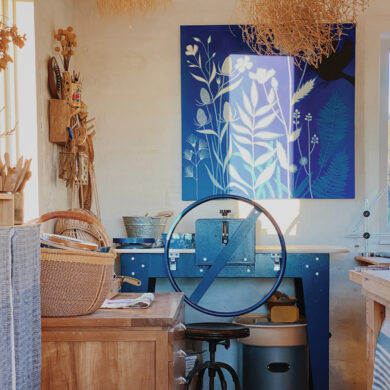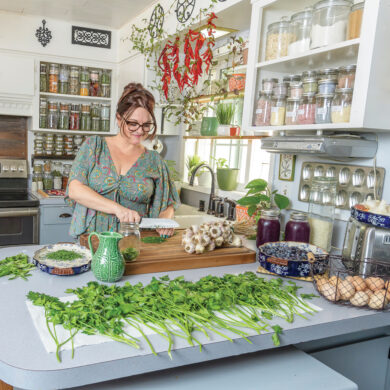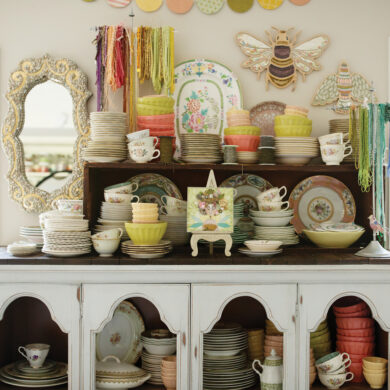In October 2018, she published her second book, Mending Matters: Stitch, Patch, and Repair Your Favorite Denim & More, which encourages readers to join the Slow Fashion movement and make mending your jeans and other garments an artful, joyful, and empowering act.
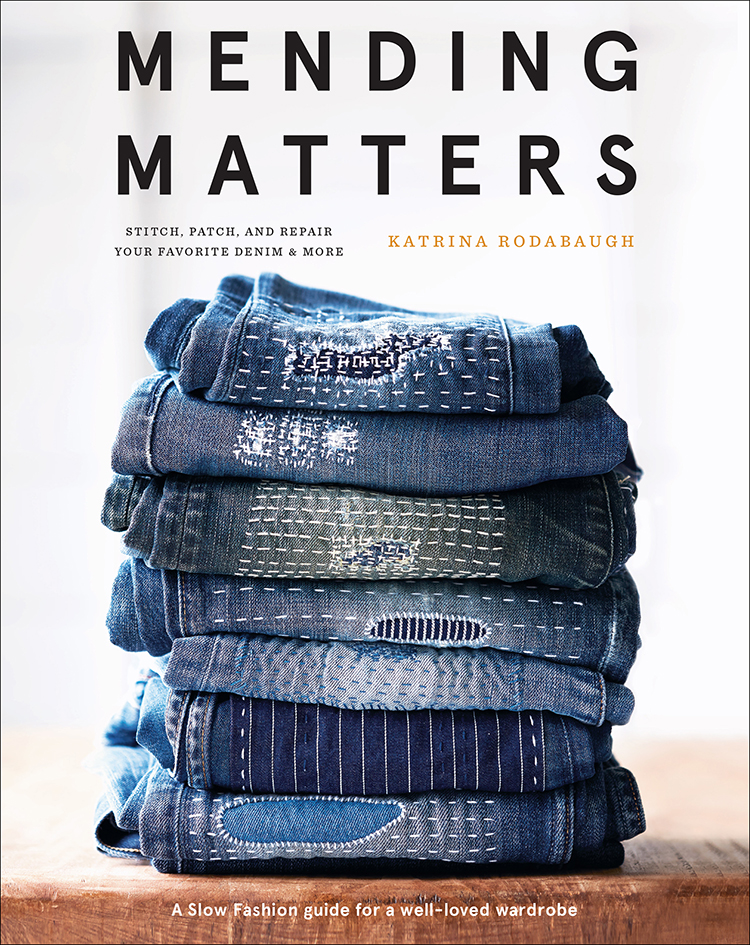
Mending Matters is the result of mending, patching, and repairing my garments for the past five years. It’s the result of teaching dozens of workshops, meeting hundreds of students, and reading as many Slow Fashion books as I could while parenting two young boys and moving 3,000 miles from Oakland, California, to Upstate New York. I wouldn’t say the work came at a time that was particularly strategic, but I would say it came at a time that was particularly powerful. This book is the result of my personal art project, Make Thrift Mend, which started in August 2013 in response to the Rana Plaza factory collapse in Dhaka Bangladesh, killing 1,134 garment workers and injuring hundreds more.
Mending Matters was the result of a passion project—a gut reaction, an emotional response, a yearning to align my wardrobe with my values. The work arose from a space that felt very emotional and urgent in the wake of the fatal factory collapse. How could I make a difference? Make Thrift Mend was the intersection of my training in sustainability, work experience in the arts, and passion for fiber and fashion. Four months after the Rana Plaza factory, I swore off fast-fashion though I didn’t realize I was swearing it off forever. I thought I was just pausing to assess my shopping habits, but as it turns out, it was the first step towards a deeper and more personal commitment to sustainable living.
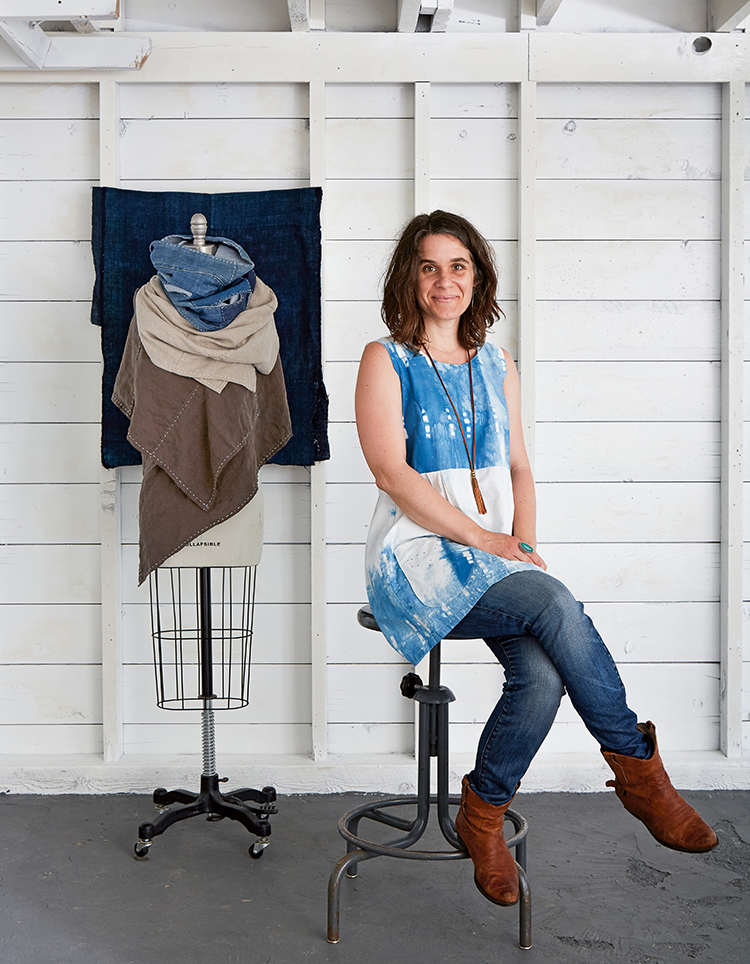
I started Make Thrift Mend as a temporary fashion fast—I abstained from buying any new clothing for one entire year. Instead, I focused on making simple garments, buying secondhand, and mending what I already owned. Shortly into that first year, I also decided to prioritize biodegradable garments—secondhand cotton, linen, silk, and wool—because they could ultimately turn to compost, and they could also be dyed with plants. This meant those simple, secondhand, light-colored linen dresses held potential for a rainbow of foraged and garden-grown color.
The first year of Make Thrift Mend ended quickly, and I committed to a second year with the clause that new clothing could be handmade or locally made. The third year I decided I could purchase new clothing if it is sustainably made and/or organic. The fourth year I turned to my studio materials—how could I make my tools and fibers more sustainable? And, the fifth year I returned to making simple garments from secondhand fabric or fabric in my stash. I was changed. Slow Fashion was my new normal. There was no turning back to sales racks and impulse shopping—my wardrobe had shifted, and my studio work had too.
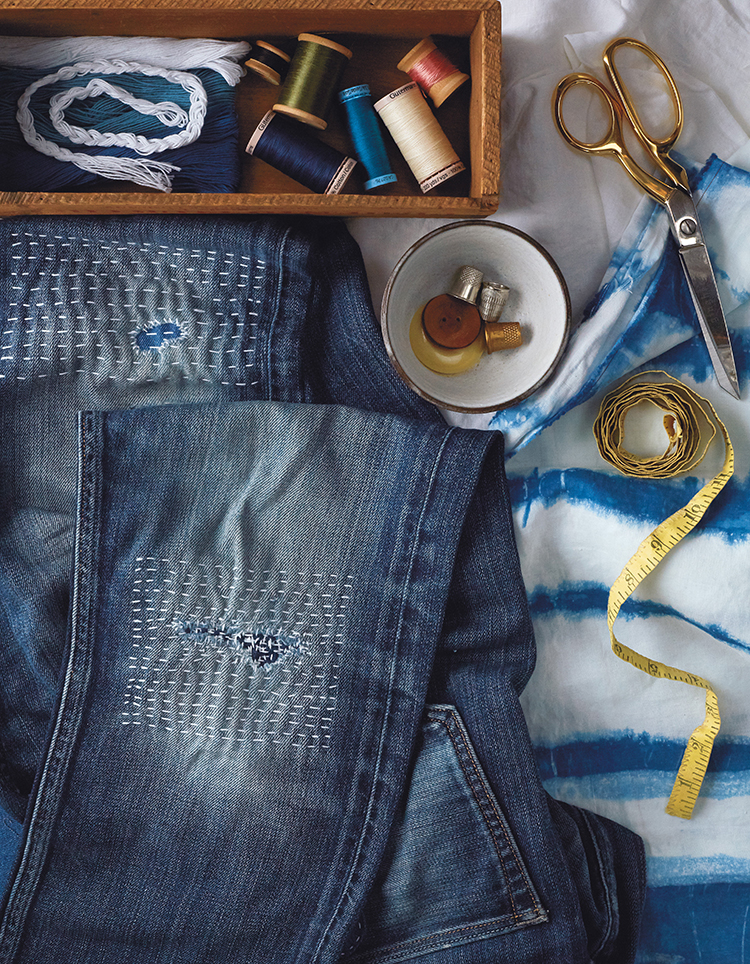
The definitions of Slow Fashion are wide and varied, though most can agree that at its core it’s the intentional slowing down of fashion consumption—an intended shift towards mindfully acquiring clothing that we love, need, and plan to wear for a long time. The results are sometimes a wardrobe that’s handmade, ethically-purchased, secondhand, minimalist, or some combination of the above. But, starting with what we already own is typically the most sustainable choice. Going forward, we can shift our impact by simply valuing what we do acquire, wearing it longer, and honoring our garments through repair.
If we just pause before that very next purchase, we can gain clarity that can have lasting impact. I find this helps to simplify questions about beginning to build a Slow Fashion wardrobe—repair what you already own. Sustainable living is different for everyone depending on economics, geography, profession, lifestyle, culture, and aesthetics, etc., but we can all benefit from mending. I like to think this is where the true beauty lies—each person’s expression of Slow Fashion can be utterly individual, yet we can all mend. Slow Fashion should look different for everyone—it’s a value, not a style.
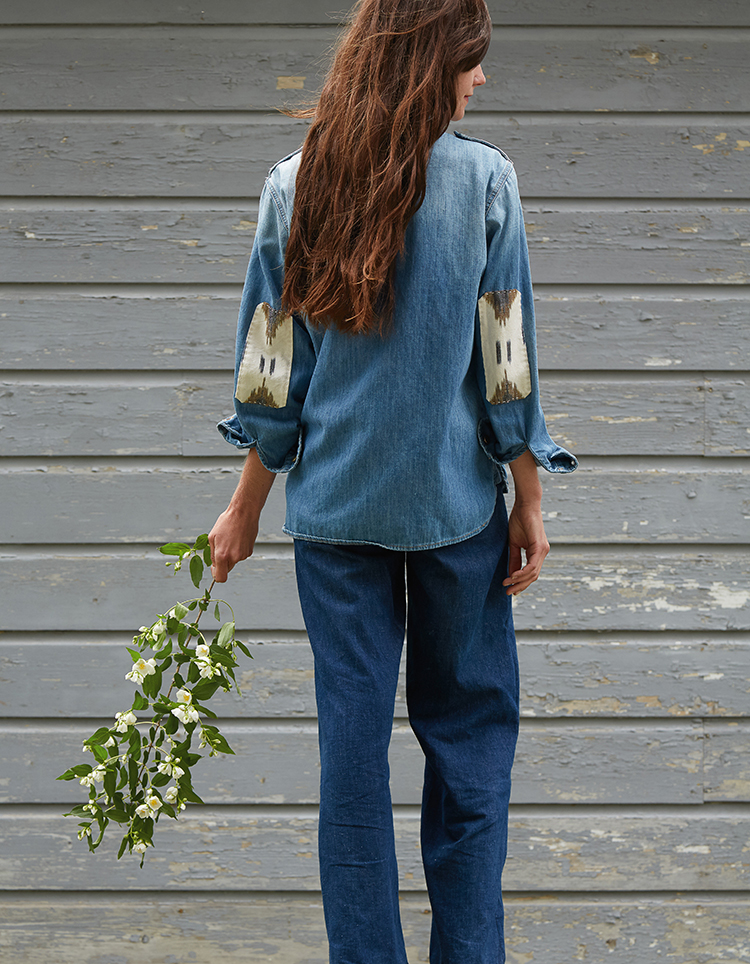
My lightbulb moment with Slow Fashion was when I realized I could turn my experience in the arts—and more particularly the basic elements of design like line, scale, shape, and color—towards my mending. Suddenly, patches and thread became design tools, and garments became my canvases. Repair work held the potential for creative expression and political engagement.
My clothes became my art, my social practice, and my source of connection with a like-minded community.
Mending Matters was one-part dream-art-project and one-part very practical teaching tool. As my Make Thrift Mend project grew, my studio work shifted from exhibitions and craft fairs to classrooms and creating opportunities for folks to learn about sustainable style. Even though I taught workshops in various locations around the U.S., I kept receiving requests from students farther and farther away. Mending Matters allowed me to turn my mending workshops into a portable teaching tool that could travel without me. If folks wanted to take my workshop but couldn’t join me in person, no matter what the distance, they could learn mending from my book.
What began as a personal art project to respond to the tragedy of Rana Plaza has resulted in a deep commitment to Slow Fashion. It’s resulted in embroidery as a form of repair, foraging dyes as a form of color creation, and seeking out secondhand garments as a form of design renewal and political engagement. As I move deeper into my work with teaching, designing, and publishing, I am reminded that sometimes a personal project really can change lives. Yet, I also remind my students that Slow Fashion doesn’t happen overnight, nor should it—the change happens over months and years by just focusing on one singular garment at a time.
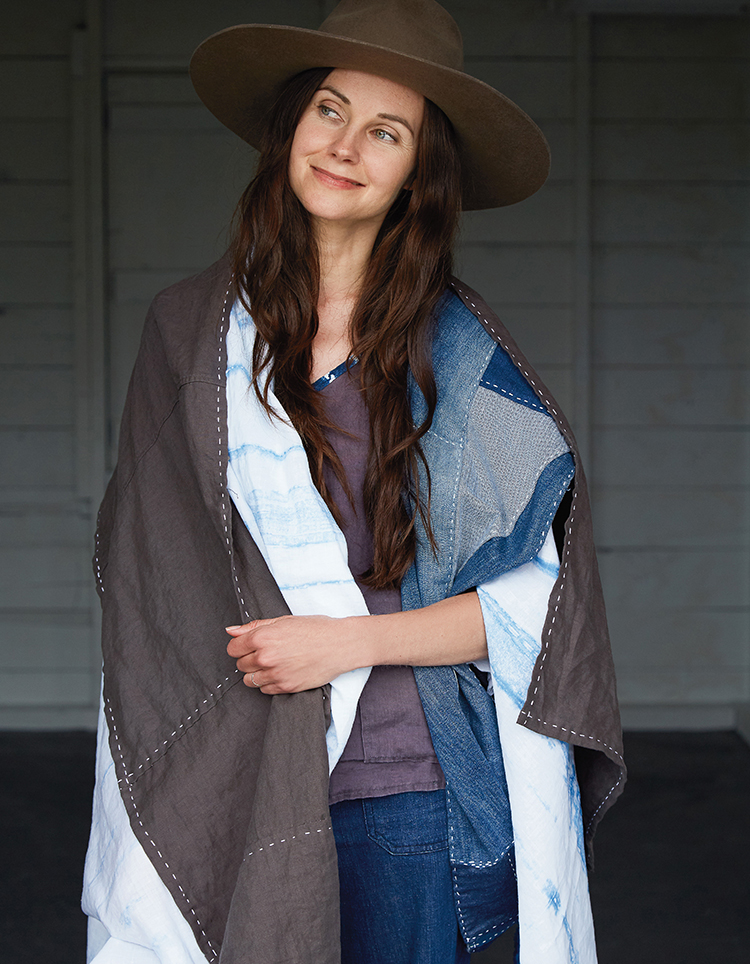
“Start where you are. Use what you have. Do what you can.”
– Arthur Ashe
Over five years, I’ve amassed a wardrobe of mostly mended, plant-dyed, secondhand, and handmade garments with some special ethically purchased garments too. But, this did not happen instantaneously. It happened slowly and deliberately with one beloved handmade dress taking nearly five months to finish. The greatest gift is not owning garments that I view as beautiful but growing a wardrobe that’s meaningful, personal, and rooted in my ethics.
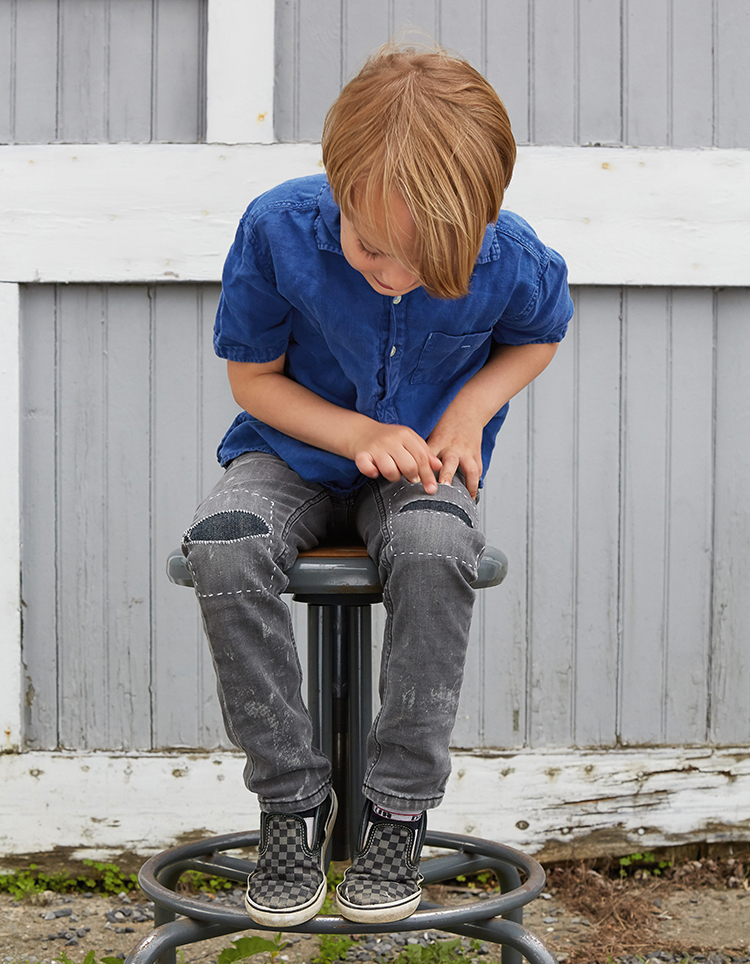
In October 2018, she published her second book, Mending Matters: Stitch, Patch, and Repair Your Favorite Denim & More, which encourages readers to join the Slow Fashion movement and make mending your jeans and other garments an artful, joyful, and empowering act.

Mending Matters is the result of mending, patching, and repairing my garments for the past five years. It’s the result of teaching dozens of workshops, meeting hundreds of students, and reading as many Slow Fashion books as I could while parenting two young boys and moving 3,000 miles from Oakland, California, to Upstate New York. I wouldn’t say the work came at a time that was particularly strategic, but I would say it came at a time that was particularly powerful. This book is the result of my personal art project, Make Thrift Mend, which started in August 2013 in response to the Rana Plaza factory collapse in Dhaka Bangladesh, killing 1,134 garment workers and injuring hundreds more.
Mending Matters was the result of a passion project—a gut reaction, an emotional response, a yearning to align my wardrobe with my values. The work arose from a space that felt very emotional and urgent in the wake of the fatal factory collapse. How could I make a difference? Make Thrift Mend was the intersection of my training in sustainability, work experience in the arts, and passion for fiber and fashion. Four months after the Rana Plaza factory, I swore off fast-fashion though I didn’t realize I was swearing it off forever. I thought I was just pausing to assess my shopping habits, but as it turns out, it was the first step towards a deeper and more personal commitment to sustainable living.

I started Make Thrift Mend as a temporary fashion fast—I abstained from buying any new clothing for one entire year. Instead, I focused on making simple garments, buying secondhand, and mending what I already owned. Shortly into that first year, I also decided to prioritize biodegradable garments—secondhand cotton, linen, silk, and wool—because they could ultimately turn to compost, and they could also be dyed with plants. This meant those simple, secondhand, light-colored linen dresses held potential for a rainbow of foraged and garden-grown color.
The first year of Make Thrift Mend ended quickly, and I committed to a second year with the clause that new clothing could be handmade or locally made. The third year I decided I could purchase new clothing if it is sustainably made and/or organic. The fourth year I turned to my studio materials—how could I make my tools and fibers more sustainable? And, the fifth year I returned to making simple garments from secondhand fabric or fabric in my stash. I was changed. Slow Fashion was my new normal. There was no turning back to sales racks and impulse shopping—my wardrobe had shifted, and my studio work had too.

The definitions of Slow Fashion are wide and varied, though most can agree that at its core it’s the intentional slowing down of fashion consumption—an intended shift towards mindfully acquiring clothing that we love, need, and plan to wear for a long time. The results are sometimes a wardrobe that’s handmade, ethically-purchased, secondhand, minimalist, or some combination of the above. But, starting with what we already own is typically the most sustainable choice. Going forward, we can shift our impact by simply valuing what we do acquire, wearing it longer, and honoring our garments through repair.
If we just pause before that very next purchase, we can gain clarity that can have lasting impact. I find this helps to simplify questions about beginning to build a Slow Fashion wardrobe—repair what you already own. Sustainable living is different for everyone depending on economics, geography, profession, lifestyle, culture, and aesthetics, etc., but we can all benefit from mending. I like to think this is where the true beauty lies—each person’s expression of Slow Fashion can be utterly individual, yet we can all mend. Slow Fashion should look different for everyone—it’s a value, not a style.

My lightbulb moment with Slow Fashion was when I realized I could turn my experience in the arts—and more particularly the basic elements of design like line, scale, shape, and color—towards my mending. Suddenly, patches and thread became design tools, and garments became my canvases. Repair work held the potential for creative expression and political engagement.
My clothes became my art, my social practice, and my source of connection with a like-minded community.
Mending Matters was one-part dream-art-project and one-part very practical teaching tool. As my Make Thrift Mend project grew, my studio work shifted from exhibitions and craft fairs to classrooms and creating opportunities for folks to learn about sustainable style. Even though I taught workshops in various locations around the U.S., I kept receiving requests from students farther and farther away. Mending Matters allowed me to turn my mending workshops into a portable teaching tool that could travel without me. If folks wanted to take my workshop but couldn’t join me in person, no matter what the distance, they could learn mending from my book.
What began as a personal art project to respond to the tragedy of Rana Plaza has resulted in a deep commitment to Slow Fashion. It’s resulted in embroidery as a form of repair, foraging dyes as a form of color creation, and seeking out secondhand garments as a form of design renewal and political engagement. As I move deeper into my work with teaching, designing, and publishing, I am reminded that sometimes a personal project really can change lives. Yet, I also remind my students that Slow Fashion doesn’t happen overnight, nor should it—the change happens over months and years by just focusing on one singular garment at a time.

“Start where you are. Use what you have. Do what you can.”
– Arthur Ashe
Over five years, I’ve amassed a wardrobe of mostly mended, plant-dyed, secondhand, and handmade garments with some special ethically purchased garments too. But, this did not happen instantaneously. It happened slowly and deliberately with one beloved handmade dress taking nearly five months to finish. The greatest gift is not owning garments that I view as beautiful but growing a wardrobe that’s meaningful, personal, and rooted in my ethics.








